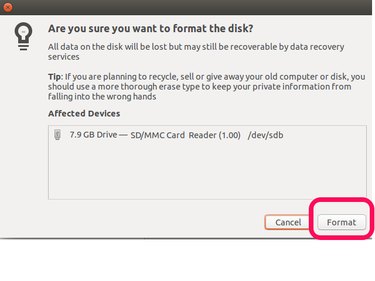


- #How to format 128gb usb from fat32 mac for large files how to
- #How to format 128gb usb from fat32 mac for large files for mac
- #How to format 128gb usb from fat32 mac for large files pro
- #How to format 128gb usb from fat32 mac for large files code
iBeesoft Data Recovery for Mac is a tool for your answer. However, you have the chance to get back all the files/data from the USB drive if you face such a situation. You can lose data at any point due to several reasons. Irrespective of the reason for using the USB drive, it is essential to create a backup of the contents.
Method 5: How to Recover Lost Files/Data from USB Flash Drive For example, it will be disk 3 in this case.Īfter completion, you can check the changed properties of the drive. It will replace the identifier with a new APFS container. Enter the command, "diskutil apfs add Volume APFS". The command will begin the process and notify you as soon as the disk changes to the file system. (Identifier is the letter assigned to the flash drive).
Enter the code "diskutil apfs createContainer/dev/".Be careful while selecting the flash drive. Choose the disk with the APFS file system from the list.It will provide all the disks connected to the Mac. Enter the command "diskutil list" in the window. Head to the "Utilities" window and launch "Terminal".You can format the flash drive using the following steps: It gives commanding results in High Sierra but not its predecessors.
It is possible that you might be facing a MacBook pro slow USB transfer rate even after the APFS file system change. Nonetheless, it is preferable to start the process after you have completed taking a backup of the contents present in the drive that you wish to format. You can choose an SD card, USB drive, and external storage devices to format to the APFS file system. However, if you like to test it much before that, you can do it by formatting the flash drive. Click the "Done" key to fix USB transfer slow on Mac.Īpple provides a chance to convert from HFS+ to APFS without deleting the content before it launches it as a final product.
You will see a completed message after the conversion is complete. From the drop-down menu that appears, choose "Convert to APFS". Next, click the "Partition" button, and select the USB drive and right-click. Now, choose "Mac OS Extended (Journaled)" option under the format category. Click the "Apply" key. Check that "Scheme" is "GUID Partition Map". From the left pane of the window, select the USB drive, and click "Partition". Open the "Show All Devices" under the "View" tab. On the Mac, open the disk utility. Connect your pen drive. The steps will help you format the drive to APFS. It means that the pen drive is not compatible when you plug to a computer running on a different OS like Windows. The reason for formatting your drive to APFS is because it works only with Mac operating systems. The Apple File System (APFS) replaces the HFS+ version focusing on SSDs, flash drives, and encryption. The slow transfer to USB Mac could be due to the file system. Method 3: Convert USB file system from FAT32 to APFS The next time you plug your pen drive, Spotlight will ignore the storage device, and you can transfer at an increased speed. Click "+" sign at the bottom to add your USB drive. From the window, click the "Privacy" tab. You can increase the transfer speed on your USB drive by disabling the Spotlight. It figures out where everything is and enables you to find anything with ease. A spotlight is an indexing tool that helps the OS to search for information. The other reason for MacBook USB transfer very slow observation is due to the Spotlight feature present in the Mac OS. Method 2: Turn Off Spotlighting for the USB Flash Drive You can get the latest USB 3.0 pen drive. The only method you can enhance the speed is by changing the pen drive. Even if you are using a USB 3.0 port on your Mac, the transfer speed will be slow due to this reason. It means that the drive has a maximum reading capacity of 35Mb per second. One of the reasons could be because you are using a pen drive that is USB 2.0. USB slow transfer speed Mac causes delays in transferring data to a USB drive. Quick Navigation Method 1: Change adapter to USB 3.0 compatible adapter Method 2: Turn Off Spotlighting for the USB Flash Drive Method 3: Convert USB file system from FAT32 to APFS Method 4: Format USB flash drive Method 5: How to Recover Lost Files/Data from USB Flash Drive Method 1: Change adapter to USB 3.0 compatible adapter Here in the article, 5 ways are provided for you to improve the USB transfer speed on macOS. If your Mac storage is not big enough to store all the files you need, then you have to make use of USB flash drives. A better way to overcome the situation is by choosing an effective method to improve the transferring progress. It is annoying when you find that your USB drive is transferring at slow speeds. Updated to Troubleshooting Tips by William on | Approved by Daryl Baxter






 0 kommentar(er)
0 kommentar(er)
